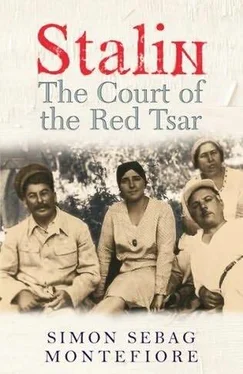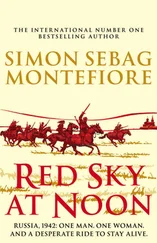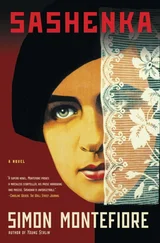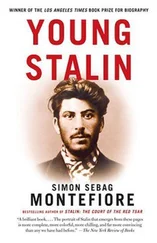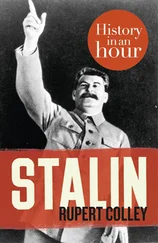Svetlana lost another part of her support system: Carolina Til, the dependable housekeeper, that cosy link to her mother, was sacked in the purge of Germans. Beria found her replacement in a niece of his wife Nina from Georgia—though as ever, his true motives are unclear. Svetlana’s new governess was Alexandra Nakashidze, tall, slim, long-legged, with perfect pale skin and long thick blue-black hair. A naïve and poorly educated girl from a Georgian village, this NKVD lieutenant entered this increasingly monocoloured world like a purple-feathered peacock. The Alliluyev and Mikoyan boys are still struck by her today.
Svetlana resented her so-called governess. Nakashidze’s arrival shows Beria’s special role in the family: could she be his spy in Stalin’s household that was otherwise controlled by Vlasik? We know that the court encouraged Stalin to remarry: was she there for Stalin? [142] She remained a presence in the household until after the end of the war when she married an NKVD general and returned to Georgia where she had children. Her daughter still lives in Georgia.
6However, there was a more obvious candidate almost within the family.
Zhenya Alliluyeva was a widow but she was convinced her husband had been murdered by Beria. Was she guilty about her relationship with Stalin? There is no evidence of this. Her husband had surely known (or chosen not to know) what was going on, but the relationship with Stalin, such as it was, had already cooled by 1938. But now Stalin missed her and made a strange, indirect proposal to her. Beria came to see Zhenya and said: “You’re such a nice person, and you’re so fine looking, do you want to move in and be housekeeper at Stalin’s house?” Usually this is interpreted as a mysterious threat from Beria but it is surely unlikely that he would have made such a proposal without Stalin’s permission, especially since she could have phoned him to discuss it. In Stalin’s mind, a “housekeeper” was his ideal baba , the khozyaika . This was surely a semi–marriage proposal, an awkward attempt to salvage the warmth of the old days from the destruction that he himself had unleashed. It was unforgivably clumsy to send Beria, whom Zhenya loathed, on this sensitive mission but that is typical of Stalin. If one has any doubt about this analysis, Stalin’s reaction to Zhenya’s next move may confirm it.
Zhenya was alarmed, fearing that Beria would frame her for trying to poison Stalin. She swiftly married an old friend, named N. V. Molochnikov, a Jewish engineer whom she had met in Germany, perhaps the lover who had almost broken up her marriage. Stalin was appalled, claiming that it was indecent so soon after Pavel’s death. Beria’s proposal puts Stalin’s hurt in a slightly different light. Beria fanned the flames by suggesting that perhaps Zhenya had poisoned her husband, an idea with resonance in this poisoners’ coven. Some say the body was dug up twice for tests. In spite of the poisoning allegations, Stalin retained his fascination with Zhenya, going out of his way just before the war to quiz her daughter Kira: “How’s your mother?” Zhenya and Anna Redens were banned from the Kremlin and Stalin looked elsewhere for his “housekeeper.” 7
* * *
A young maid named Valentina Vasilevna Istomina had worked at Zubalovo since her late teens in the early thirties. In 1938, she came to work at Kuntsevo. Stalin was attracted to a specific ideal: the busty, blue-eyed, big-haired and retroussé-nosed Russian peasant woman, submissive and practical, a baba who could make a home without in any way becoming involved in his other life. Zhenya had the looks but there was nothing submissive about her. He also found the same looks coupled with haughtiness in the top artistes of the time. Stalin was an avid attender of the theatre, opera and ballet, regularly visiting the Politburo (formerly imperial) loge in the Bolshoi or the Moscow Arts Theatre. His favourite singers were the soprano Natalya Schpiller, who was a blue-eyed Valkyrie, and the mezzo Vera Davydova. He liked to instruct them “in a fatherly way” but he also played one off against the other. He acted being in love with Davydova who later boasted that he proposed marriage: if so, it was only a joke. He teased her by suggesting that she improve her singing by copying Schpiller. When Davydova appeared in a glittery belt, he told her, “Look, Schpiller’s a beguiling woman too but she dresses modestly for official receptions.” 8
These divas were much too glamorous for Stalin but there was no shortage of available admirers, as Vlasik told his daughter. There are many stories of women invited to Kuntsevo: Mirtskhulava, a young Georgian official, remembers Stalin at a Kremlin dinner in 1938 sending him to ask a girl in his Komsomol delegation if she was the daughter of some Old Bolshevik, then inviting her to the dacha. Stalin insisted Mirtskhulava ask her secretly, without either the knowledge of the magnates at his table or of the Georgians. The same happened with a beautiful Georgian pilot whom he met at the Tushino air show in 1938 and who regularly visited Stalin.
This was probably the pattern of his trivial dalliances but what happened at Kuntsevo is beyond our knowledge. Everyone who knew Stalin insists that he was no womanizer and he was famously inhibited about his body. We know nothing about his sexual tastes but Nadya’s letters suggest they had a passionate relationship. A fascinating glimpse into his relations with women—perhaps connected to his views on sex—is provided by his attitude to dancing. He liked making Russian dance steps and kicks on his own but dancing à deux made him nervous. He told the tenor Kozlovsky at a party that he would not dance because he had damaged his arm in exile and so “could not hold a woman by the waist.”
Stalin warned his son Vasily against “women with ideas,” whom he found uncomfortable: “we’ve known that kind, herrings with ideas, skin and bones.” He was most at home with the women of the service staff. The maids, cooks and guards at his houses were all employed by Vlasik’s department and all signed confidentiality contracts though these were hardly necessary in this kingdom of fear. Even when the USSR collapsed, very few of them ever spoke. [143] President Vladimir Putin’s grandfather was a chef at one of Stalin’s houses and revealed nothing to his grandson: “My grandfather kept pretty quiet about his past life.” As a boy, he recalled bringing food to Rasputin. He then cooked for Lenin. He was clearly Russia’s most world-historical chef since he served Lenin, Stalin and the Mad Monk.
The Kremlin hairdresser, who so upset Nadya, was one of these and so was his maid Valentina Istomina, known as Valechka, who gradually became the mainstay of Stalin’s home life.
“She laughed all the time and we really liked her,” said Svetlana, “she was very young, with pink cheeks and she was liked by everyone. She was a pleasant figure, typically Russian.” She was Stalin’s “ideal” woman, buxom and neat, “round-faced and pug-nosed,” primitive, simple and unlettered; she “served at table deftly, never joined in the conversation,” yet she was always there when she was needed. “She had light brown mousy hair—I remember her well from about 1936, nothing special, not fat not thin but very friendly and smiling,” says Artyom Sergeev. Out of Stalin’s presence, she was fun in an unthreatening way, even shrewd: “She was a clever one, talkative, a chatterbox,” recalled one of Stalin’s bodyguards.
Valechka was promoted to housekeeper, taking care of Stalin’s “clothes, the food, the house and so on and she travelled with him wherever he went. She was a comfortable soul to be quiet with, yet he trusted her and she was devoted to him.” Stalin was farcically proud of the way she prepared his underwear: after the war, one Georgian official was amazed when he showed off the piles of gleaming white smalls in his wardrobe, surely a unique moment in the history of dictators.
Читать дальше
